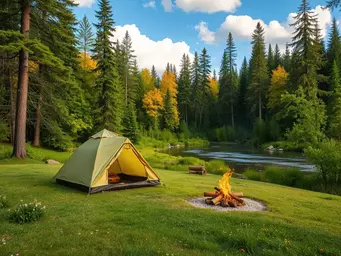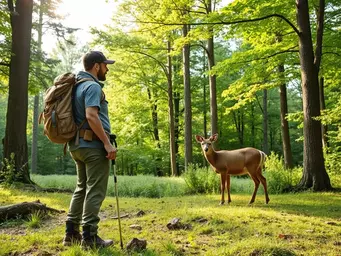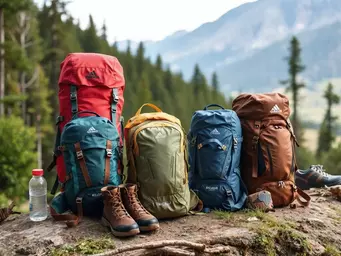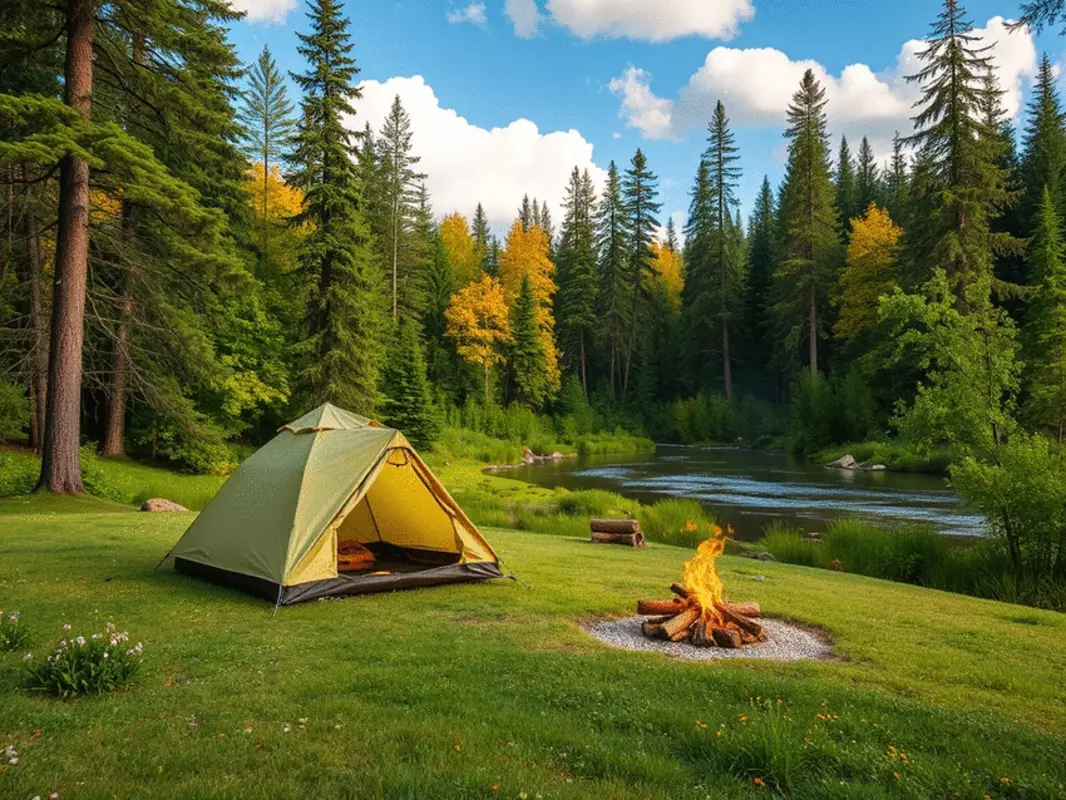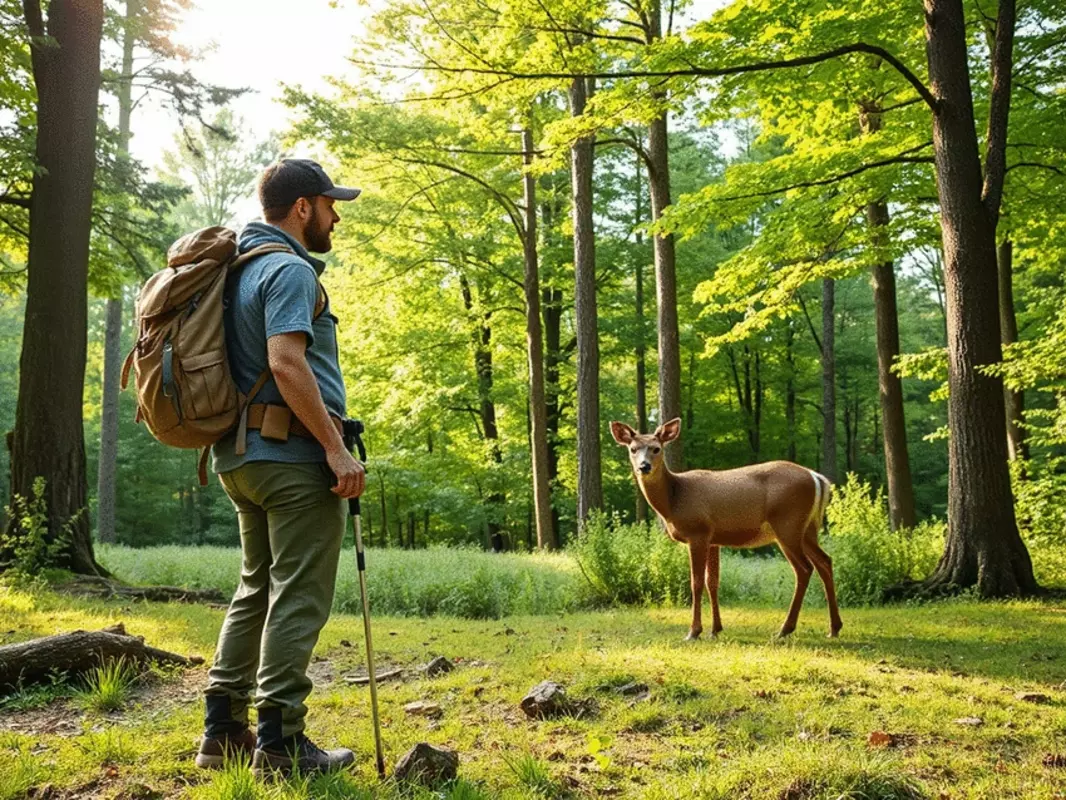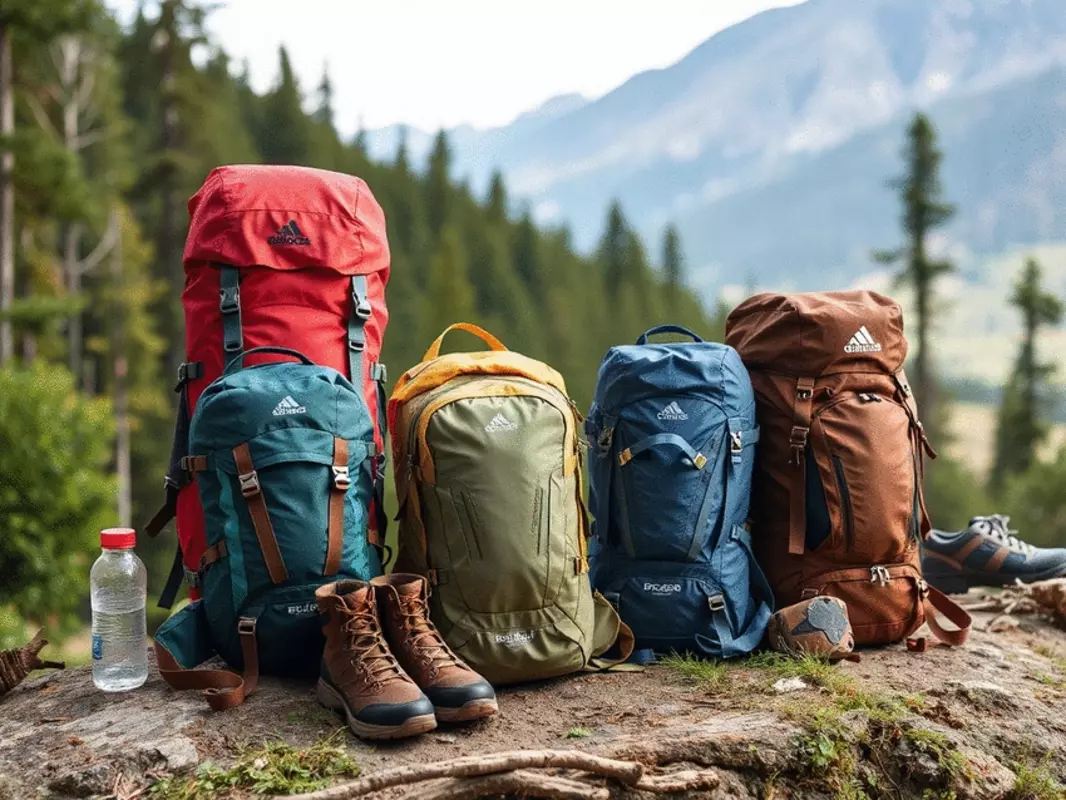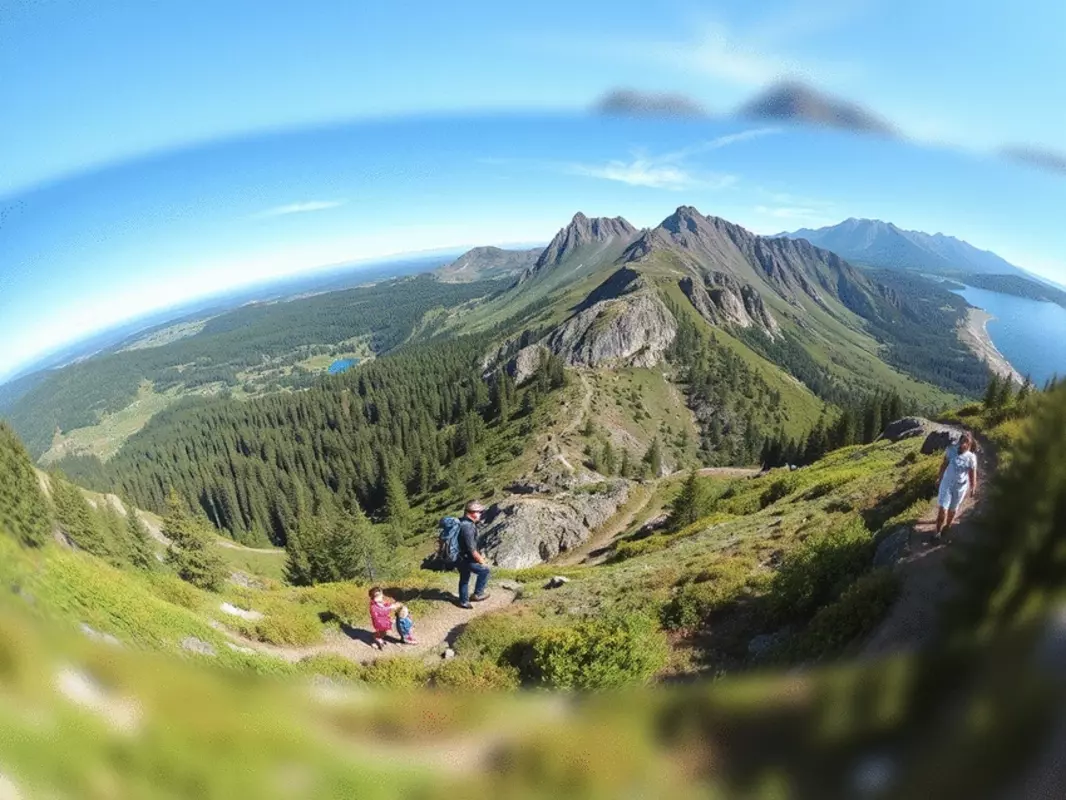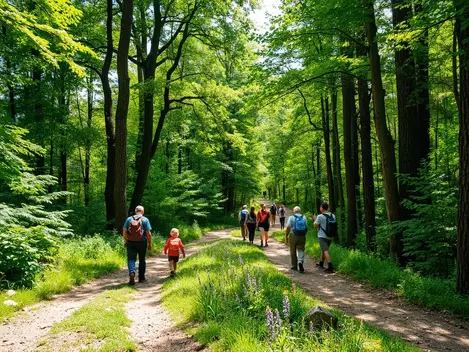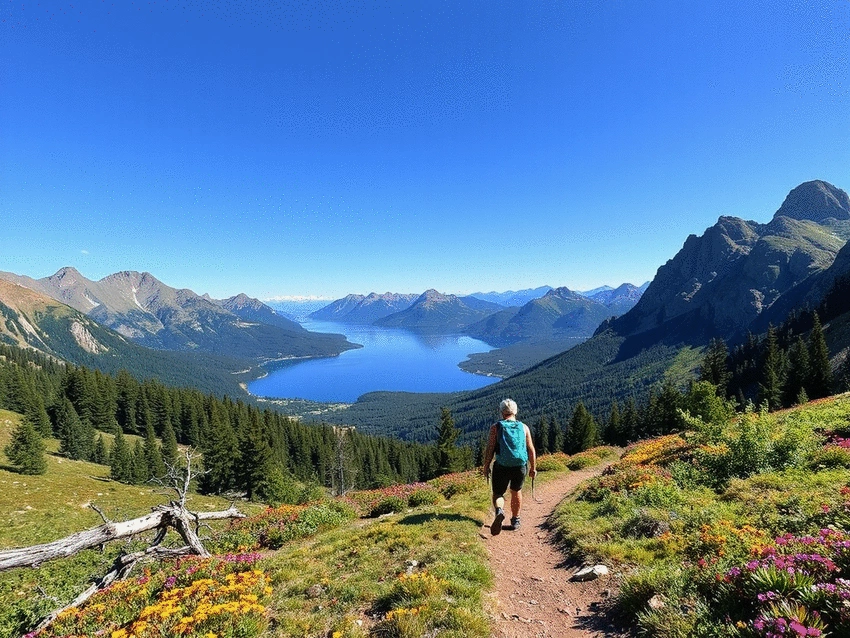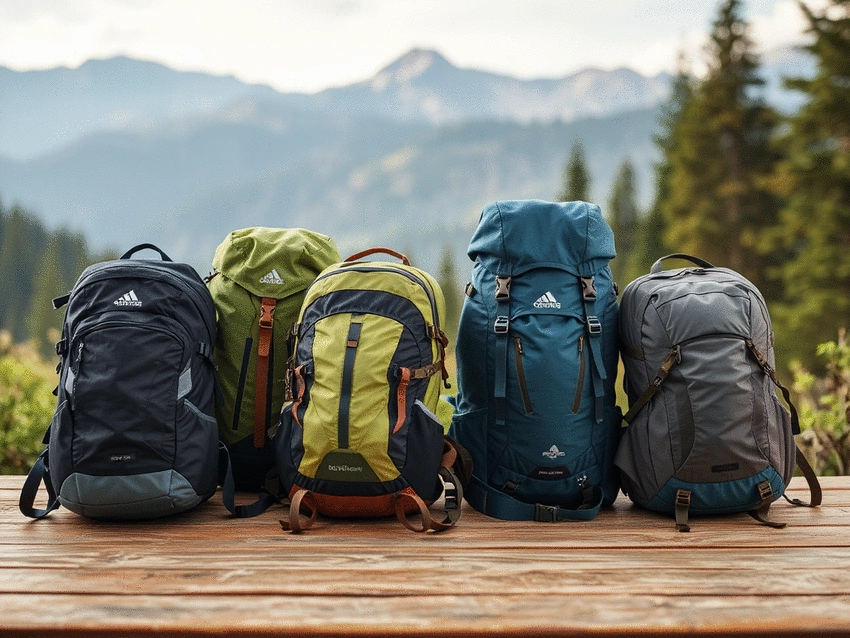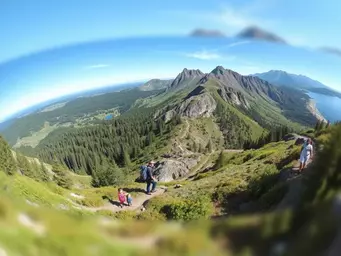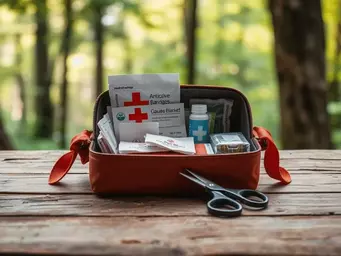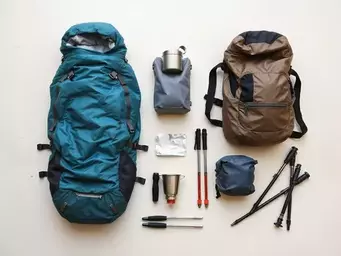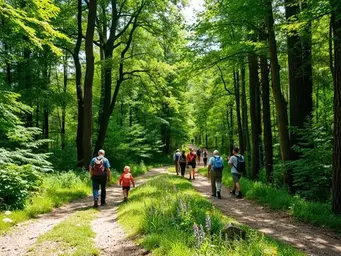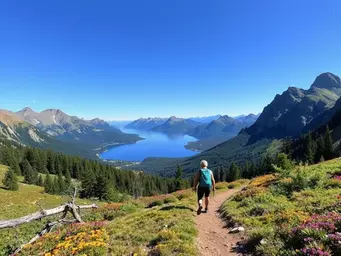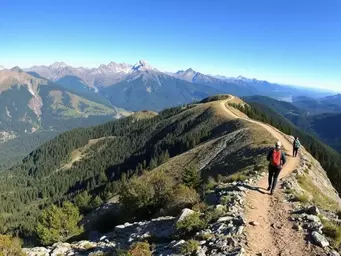Top 10 Global Hiking Trails
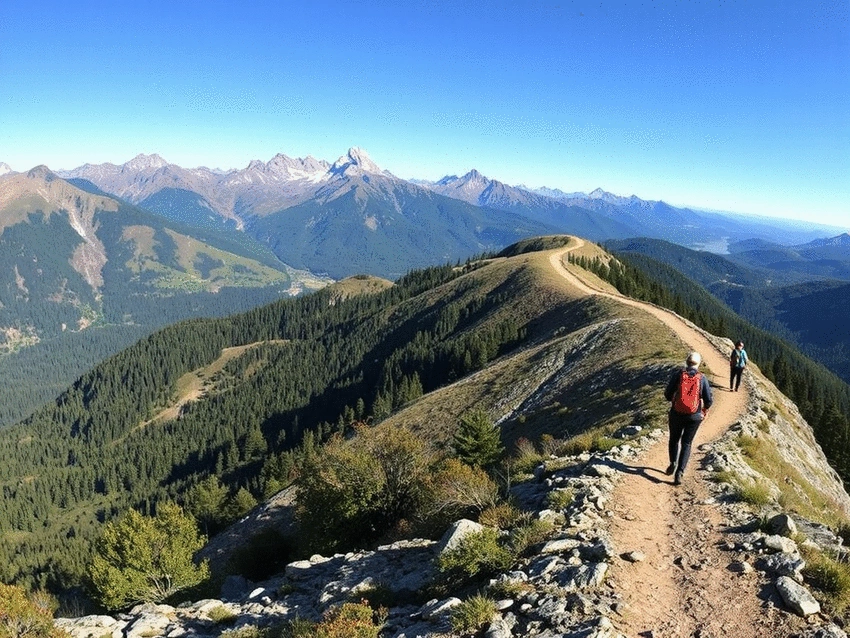
Have you ever set out on a hike, excitement bubbling within you, only to realize you were unprepared for the trail ahead? Proper planning can make all the difference between a mundane walk and a memorable adventure. Let's explore the essentials of hiking trail planning and discover how to maximize your outdoor experiences.
What You Will Learn
- Understand the varying difficulty levels of hiking trails to match your skill set.
- Differentiate between day hikes and multi-day treks for better planning.
- Discover iconic hiking destinations worth exploring in 2025.
- Learn essential packing tips and permit requirements for a successful hike.
- Adopt sustainable hiking practices to minimize your environmental impact.
Exploring Trail Characteristics: Difficulty and Length Overview
Understanding the key characteristics of hiking trails, such as their difficulty and typical length, is crucial for planning an enjoyable and safe adventure. The visual below provides a straightforward comparison of these factors.
Trail Difficulty Ratings
Well-maintained, minimal elevation
Some elevation, rugged terrain
Steep climbs, dangerous conditions
Trail Length Considerations
Few hours, basic gear, hydration focus
Overnight stays, complex planning, more gear
Research regulations, check optimal weather
Planning Your Adventure: Key Highlights of Hiking Trails Worldwide
As an avid hiker, I often reflect on the many hiking trails I've explored around the world, each offering its own unique experiences. Whether you are a seasoned veteran or just starting, understanding the variety of trails can significantly enhance your adventure. Let’s dive into the essentials of hiking trail planning, covering everything from trail difficulties to iconic destinations you should consider for your next journey!
Understanding Trail Varieties: Difficulty Levels and Lengths
When planning your hiking adventure, it's essential to understand the variety of trails available. Each trail varies in difficulty levels and lengths, catering to different skill levels. From easy walks in the park to challenging mountain climbs, knowing what to expect can help you choose the right path!
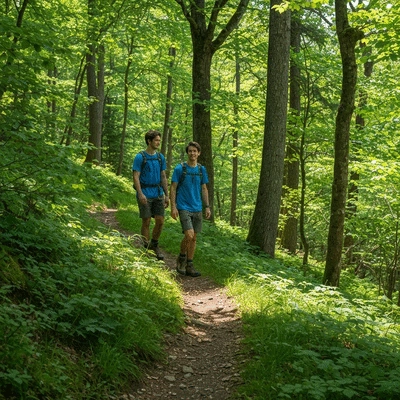
Assessing Your Hiking Skill: Trail Ratings and Preparations
Before you hit the trails, take a moment to assess your hiking skill. Trail ratings typically range from easy to strenuous, often based on factors such as elevation gain, terrain, and distance. For more detailed information on trail data and characteristics, you can refer to resources like the USGS National Digital Trails Data. Here’s a simple breakdown of trail ratings:
- Easy: Well-maintained paths, minimal elevation changes, perfect for beginners.
- Moderate: Some elevation, more rugged terrain, suitable for intermediate hikers.
- Strenuous: Steep climbs, potentially dangerous conditions, recommended for experienced hikers.
Always remember to prepare accordingly based on your chosen trail rating. For example, carrying adequate water and snacks becomes even more critical when tackling strenuous hikes!
Choosing the Right Length: Day Hikes vs. Multi-day Treks
Next, consider how long you want to be on the trail. Day hikes are perfect for quick adventures and usually require basic gear. On the other hand, multi-day treks demand more planning and equipment. Here’s what to keep in mind:
- Day Hikes: Generally last a few hours; focus on lightweight gear and hydration.
- Multi-day Treks: Involve overnight stays, necessitating tents, sleeping bags, and more complex food planning.
No matter your choice, understanding your limits will help ensure a safe and enjoyable experience.
Exploring Iconic Destinations: Must-Explore Trails for 2025
Now, let’s explore some of the most iconic trails you should consider for your next adventure in 2025! These trails not only showcase breathtaking landscapes but also offer unique cultural experiences.
Torres del Paine W Circuit: A Patagonia Experience
Located in Chile, the Torres del Paine W Circuit is a must for any serious hiker. With its stunning granite towers and vibrant lakes, this trail offers a mix of challenging terrain and spectacular views! For inspiration and tips on adventures like this, check out Outside Online.
Inca Trail to Machu Picchu: Cultural Treasures and Landscape
Walking the Inca Trail is about more than just reaching Machu Picchu; it’s a journey through history, showcasing ancient ruins and breathtaking Andean scenery. Make sure to plan ahead as permits are required!
Tour du Mont Blanc: European Alpine Adventure
The Tour du Mont Blanc is one of Europe’s most famous long-distance hikes, circling the majestic Mont Blanc massif. This trail offers stunning views of glaciers, charming alpine villages, and a taste of multiple cultures.
Appalachian Trail: Diverse Landscapes and Historical Richness
Spanning over 2,000 miles, the Appalachian Trail is a classic American hiking experience. It traverses diverse landscapes and rich history, making it ideal for long-term adventurers and day-trippers alike!
Mount Everest Base Camp: A Journey to the Roof of the World
If you’re seeking an unforgettable challenge, the trek to Mount Everest Base Camp offers an incredible experience. While it’s not for the faint of heart, the breathtaking views and sense of accomplishment are unmatched.
Hidden Gems: Emerging Trails Worth Discovering
While the iconic trails are certainly appealing, don't overlook the hidden gems that offer unique experiences and less crowding.
Underrated Trails with Unique Experiences
There are countless underrated trails that promise stunning scenery and memorable encounters. Look for local hiking groups or forums to discover paths less traveled!
Trail Features: Scenic Viewpoints and Cultural Insights
Many of these lesser-known trails have features that provide scenic viewpoints or cultural insights. Embrace the opportunity to immerse yourself in the local environment—who knows what treasures await?
Essential Planning Tips for Trail Enthusiasts
Planning is crucial for a successful hike, and I’m here to share some essential tips that have served me well throughout my hiking adventures!
Gear Recommendations: What to Pack for Your Journey
Whether you’re heading out for a day hike or a multi-day trek, having the right gear is vital. Here’s a quick packing list:
- Day Hike: Water, snacks, first aid kit, and a lightweight jacket.
- Multi-day Trek: Tent, sleeping bag, cooking gear, food, and plenty of water.
Always double-check your packing list! I’ve forgotten crucial items before, and it always makes for a more challenging adventure.
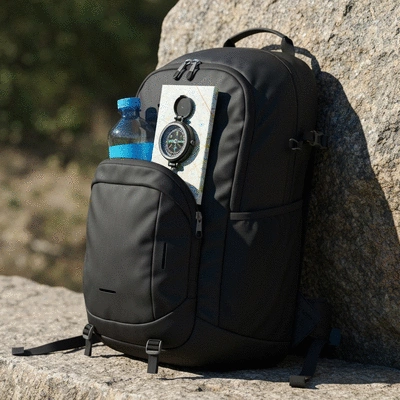
Permit Requirements: Navigating Logistics and Regulations
Some trails require permits, so it’s essential to research ahead of time. Permits can help regulate foot traffic and ensure the preservation of natural areas. Don’t let this step slip your mind!
Best Seasons for Each Trail: Weather Considerations
Weather can significantly impact your hiking experience. Make sure to check the best seasons for each trail. For example, hiking in Patagonia is best during the Southern Hemisphere summer, while the Inca Trail is often best from May to September.
Understanding Hiking Safety: Preparing for Your Adventure
Lastly, always prioritize safety! Familiarize yourself with the trail, pack a first-aid kit, and inform someone of your hiking plans. Your adventure should be a safe and enjoyable experience, so preparation is key.
Responsible Hiking: Sustainable Practices to Follow
As outdoor enthusiasts, we have a responsibility to practice sustainable hiking. Here are some ways to minimize your impact while enjoying the trails.
Environmental Impact: Minimizing Your Footprint
Always follow the Leave No Trace principles to reduce your environmental footprint. This includes packing out what you pack in and being mindful of where you step.
Trail Maintenance: Ensuring Longevity for Future Hikers
Consider participating in local trail cleanups or maintenance days. These efforts ensure that trails remain accessible and enjoyable for all hikers!
Engaging in Eco-Tourism: Supporting Local Conservation Efforts
Support local businesses that promote eco-tourism. This not only helps the local economy but also encourages conservation of the natural areas you love! Organizations like the World Wildlife Fund offer insights into global conservation efforts.
Connecting with Local Flora and Fauna: Enhancing Your Hiking Experience
Take the time to appreciate the flora and fauna around you. Not only does this enhance your experience, but it also fosters a deeper connection with nature. It’s all part of the adventure!
Pro Tip
When planning your hiking adventure, consider downloading trail apps that provide real-time updates on trail conditions and weather forecasts. This can help you make informed decisions and enhance your overall experience on the trails!
Summarizing Your Hiking Journey: Key Takeaways for Trail Seekers
As we wrap up our exploration of hiking adventures, it's vital to reflect on the paths we've chosen. Each trail tells a unique story, and understanding your personal preferences can help you select the right adventure for your next outing. Have you ever thought about what draws you to a particular trail? Is it the scenery, the challenge, or perhaps the memories you create along the way?
To assist you in this process, consider the following key takeaways:
- Understand your skill level and choose trails that match it.
- Prioritize your interests, whether they lie in breathtaking vistas or cultural experiences.
- Reflect on the time you have for your adventure—day hikes or multi-day treks?
Reflecting on Your Trail Choices: Which Adventure Suits You?
Before embarking on your next hike, take a moment to assess what you truly enjoy. I often find that revisiting my hiking journals helps me pinpoint the experiences that resonate the most. Finding the right adventure involves knowing whether you thrive in serene forests or rugged mountain ranges. What atmosphere fuels your passion for exploration?
- Consider your physical fitness and comfort level.
- Think about the landscapes that inspire you.
- Decide if you prefer solitude or the company of fellow adventurers.
By reflecting on these aspects, you can tailor your hiking experiences to foster personal growth and joy in nature. Each trail you choose can lead to a deeper appreciation for the outdoors!
Engaging with the Hiking Community: Share Your Experiences
Connecting with fellow hikers is a fantastic way to enhance your outdoor adventures. I absolutely love hearing about others' journeys and sharing tips! The hiking community is vibrant and supportive, offering a wealth of knowledge and inspiration. Sharing stories not only enriches your own experience but can motivate others to explore the great outdoors.
- Attend local hiking meetups or workshops.
- Join online forums or social media groups focused on hiking.
- Share your adventure photos and stories on Backpack Hiking!
Engaging with others who share your passion creates a sense of camaraderie that can make your hiking journey even more fulfilling. Together, we can foster a community that celebrates nature!
Exploring Hiking Clubs: Building Connections with Fellow Enthusiasts
Hiking clubs are an excellent way to meet like-minded individuals who share your enthusiasm for the trails. I’ve often found that joining a club not only opens doors to new trails but also builds lasting friendships. Participating in group hikes can enhance your experience and motivate you to explore areas you might not have ventured into alone.
- Research local hiking clubs and their upcoming events.
- Engage with club members to learn about different trails and tips.
- Participate in volunteer opportunities to give back to the trails!
By connecting with fellow hiking enthusiasts, you can deepen your love for the outdoors and discover even more wonderful adventures waiting just around the corner!
Frequently Asked Questions (FAQs)
- What are the typical trail difficulty ratings?
- Trail ratings usually range from Easy (well-maintained paths, minimal elevation) to Moderate (some elevation, rugged terrain) and Strenuous (steep climbs, potentially dangerous conditions).
- What's the difference between day hikes and multi-day treks?
- Day hikes are shorter, typically lasting a few hours, and require basic gear. Multi-day treks involve overnight stays, necessitating more complex planning, gear like tents and sleeping bags, and more food.
- What are some iconic hiking destinations mentioned for 2025?
- Iconic trails include the Torres del Paine W Circuit in Patagonia, the Inca Trail to Machu Picchu, the Tour du Mont Blanc, the Appalachian Trail, and the Mount Everest Base Camp trek.
- Why are permits important for some trails?
- Permits are essential for some trails to regulate foot traffic, preserve natural areas, and ensure a safe and managed experience for hikers. It's crucial to research permit requirements in advance.
- How can I practice sustainable hiking?
- Sustainable hiking involves minimizing your environmental footprint by following Leave No Trace principles, participating in trail maintenance, supporting eco-tourism, and appreciating local flora and fauna.
Recap of Key Points
Here is a quick recap of the important points discussed in the article:
- Understand the variety of hiking trails based on difficulty levels and lengths to choose the right path.
- Assess your hiking skills and prepare accordingly for different trail ratings: easy, moderate, and strenuous.
- Consider the duration of your hike—whether it's a day hike or a multi-day trek—and pack accordingly.
- Research iconic trails and hidden gems for unique experiences and breathtaking landscapes.
- Prioritize essential planning tips such as gear recommendations, permit requirements, and understanding trail safety.
- Practice responsible hiking by minimizing your environmental impact and supporting local conservation efforts.
- Engage with the hiking community to share experiences and learn from fellow outdoor enthusiasts.
